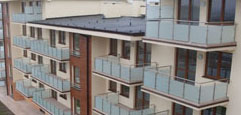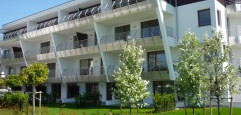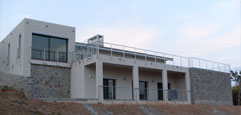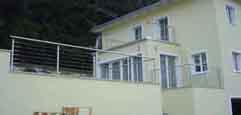Types of stainless steel and their application in railings system.
Stainless steel (also called or stainless steel INOX) - is an alloy of iron, which contains at least 10.5% of chromium with the additions of other alloying elements to modify the structure and to improve the properties, which include corrosion resistance, strength, formability and resistance at low temperatures.
In Poland, until recently the division of corrosion-resistant steel, for steel and Acid-resistant steel. Stainless steels include ferritic and martensitic chromium steels, and stainless steels - austenitic chrome-nickel.
Another division of corrosion-resistant steel was adopted, in force already in Poland to the European standard BS EN 10088. According to this standard, the name "Stainless Steel" covers all types of stainless steels, so both existing stainless steels and stainless steel. Pay attention to these differences in terminology to avoid confusion between suppliers and users of stainless steels.
- The advantages of using steel:
- - corrosion resistance
- - possibility to use in aggressive environments
- - resistance to high temperatures (it is connected with a high content of Cr)
- - brilliant shine
- - sustainability
Designation of steel according to various standards:

Stainless Steel 201
Type 201 belongs to the austenitic chromium-nickel-manganese batteries, characterized by excellent stretch. It is highly resistant to oxidation and many moderate corrosive agents. Type 201 is applicable where the need is greatest strength. Made of this material most popular tape BAND-IT. Grade stainless steel easily corrosive to be used only in balustrades inside the building often used by competitors to reduce production costs railings. Our company is *** NOT *** apply such a grade of steel in the balustrades.Stainless Steel 304
Type 304 austenitic, low carbon 18-8 chromium-nickel. It is resistant to corrosion and has good weldability. Type 304 is the most widely used stainless steel. It is used in the chemical, paper, food processing and, among others in medical equipment, heat exchangers, etc. Stainless steel AISI304 steel type is not intended for use in aggressive environments with the content of chlorine, sulfur, salt (swimming pools, coastal areas)!Stainless Steel 316
Type 316 is an austenitic stainless steel chrome-nickel, resistant to high temperatures and exceptional resistance to corrosion. It is widely used at sea and in environments where is treated with chemical agents, salts, acids and high temperatures. Type 316 has excellent resistance to creep at elevated temperatures.If you use the wrong type of stainless steel, and with improper assembly or insufficient diligence, stainless steel can corrode (oxidize). The presence of corrosion (oxidation) is mainly the lack of respect for the purity of the work, insufficient protection or harm to the environment (with the presence of sulfur and chlorine).





